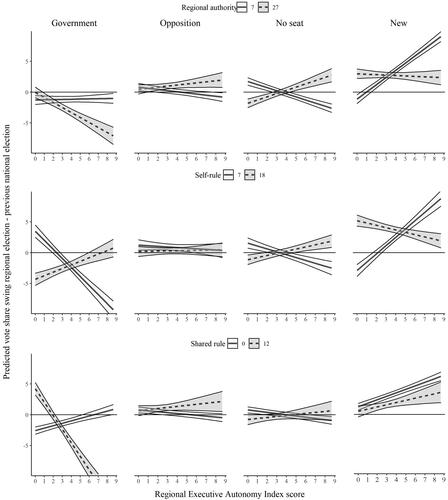Figures & data
Table 1. Hypothesised impacts of executive autonomy and authority on second-order election effects.
Table 2. Included countries, regions and regional and national elections.
Table 3. Regional Executive Autonomy Index (REAI) indicators.
Figure 1. Marginal effects of executive autonomy and regional authority on party vote share swings.
Notes: Shown are predicted vote share swings between regional and previously held national elections and their 95% confidence intervals when executive autonomy and regional authority, self-rule and shared scores go from their minimum to their maximum (Online Appendix Table B1b). The estimates in are based on the model results presented in Online Appendix Table B2 which include 41,603 vote share swings for 2665 elections held in 282 regions in 14 countries ().

Table 4. Average vote share swings won by personal lists and regionalist parties.
